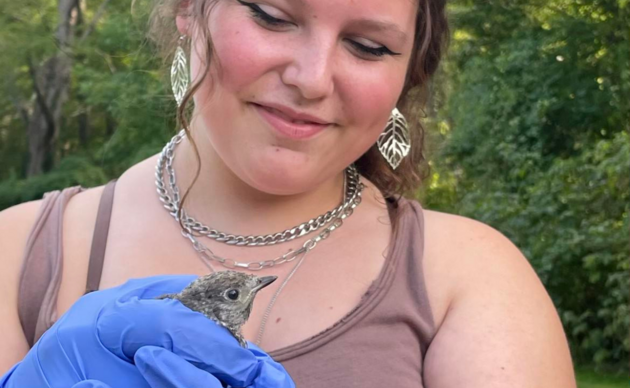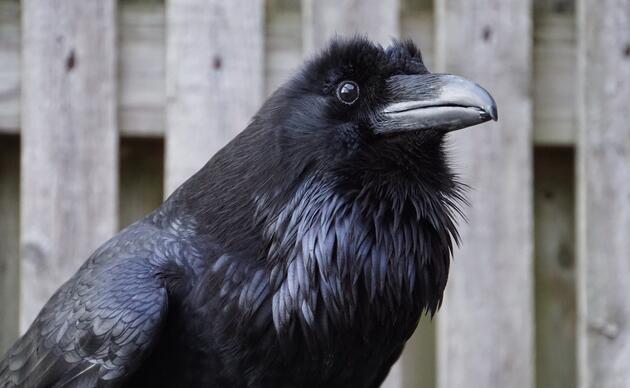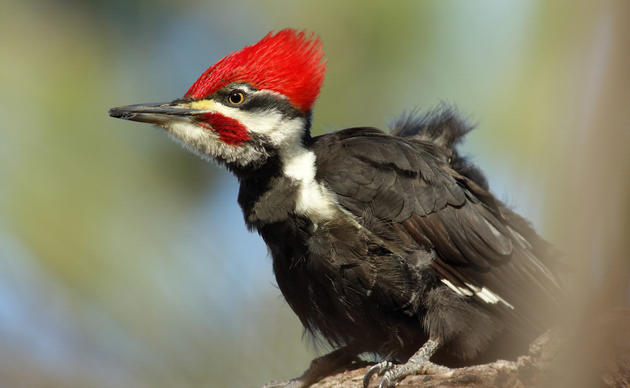Eastern Box Turtle: Bao
Brought to Sharon Audubon Center: January 2008
History: Bao, whose name means precious treasure in Chinese, came to the Sharon Audubon Center from another wildlife rehabilitation center. Bao sustained traumatic shell injuries from an animal attack, most likely a dog. His injuries were so severe; the shell was missing in many areas down to the muscle. He is non-releasable because such a large area of carapace is missing and he is unable to retreat into his shell for protection. Bao now lives comfortably with our Wood Turtle and Red-eared Pond Slider in the Visitor Center's Exhibit Room.
Eastern Box Turtle: Slug
Brought to Sharon Audubon Center: September 27, 2009
History: Slug was one of two Box Turtles admitted into the Wildlife Rehabilitation Clinic. A woman had found the turtles in her yard and decided to illegally keep them as pets. After 3 years in captivity, one of the two turtles became ill. It was suffering from severe malnutrition and parasite infestations, and unfortunately, died a day later at the veterinarian’s office. Slug was the healthier of the two and with some medications and TLC she came around. Since she was taken from the wild as a hatchling, she did not establish a home range and would not fare well in the wild. She was not exposed to a wild Box Turtle's diet and was unafraid of people and possible predators. It is also unacceptable to release an animal like this back into the wild for fear of introducing diseases to a wild population. Because of this, Slug will spend the rest of her life in captivity. She now lives in the large turtle enclosure in the exhibit room with Bao, Autumn, and Tucker. In Connecticut, as well as many other states, it is illegal to collect Box Turtles from the wild.
Eastern Box Turtles: Autumn and Tucker
Brought to Sharon Audubon: 2020
History: Both turtles were confiscated by the Connecticut Department of Energy & Environment after having been reported as being kept illegally as pets.
Eastern Box Turtle (Terrapene carolina)
Did you know? Box turtles are called so because of the hinge on the bottom of their shell, which allows the turtle to hide its head and legs entirely inside the shell and then close into a tightly-sealed "box," protecting itself from predators. Box turtles are found only in North America.
Description: This turtle has a high domelike shell, which varies considerably in color from brown and black, yellow, or orange. Males have red eyes and a concave plastron (bottom shell) while females have brown eyes and a flat or convex plastron. There are four toes on each hind foot. Box turtles have very strong legs and are capable of climbing over rocks and small logs.
Size: 5 - 6 inches long
Range: Eastern Box Turtles can be found up and down the East Coast from New Hampshire to Georgia and west into Michigan, Illinois, and Tennessee. The Eastern Box Turtle is listed as a Species of Special Concern in Connecticut.
Habitat: These terrestrial turtles spend most of their time on land, but are able to swim and can be found in the mud or small streams, especially in hot weather.
Diet: Box turtles are omnivorous, meaning they eat a variety of plants and animals from algae, moss, grasses, willow leaves, strawberries, and raspberries, to insects, mollusks, earthworms, tadpoles, and other carrion. They do not have teeth, but the top jaw curves down toward the bottom jaw forming a "beak," which is used to pull up grasses and other foods.
How you can help, right now
Learn & Explore
Where birds thrive, people prosper. Help us transform local communities into places where birds flourish. Learn what you can do to nurture wildlife, nature, and conservation in Connecticut.
Support Our Work
Through land stewardship, science, education, and advocacy, we work to preserve habitat and protect bird species that are of state, national, and global concern. Your gift makes a difference.
Join Our Family
When you become a member of Sharon Audubon Center, you are protecting critical woodlands and a natural heritage for generations to come. Help us do great things.





